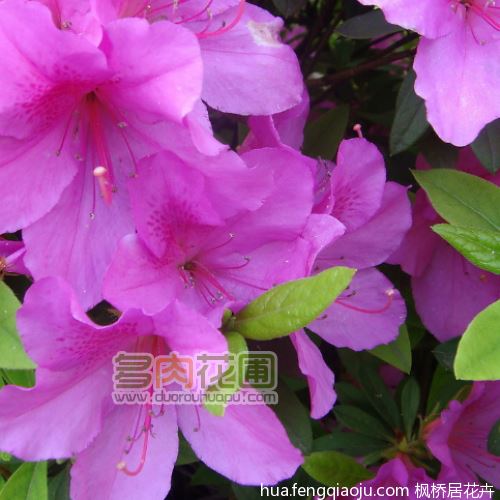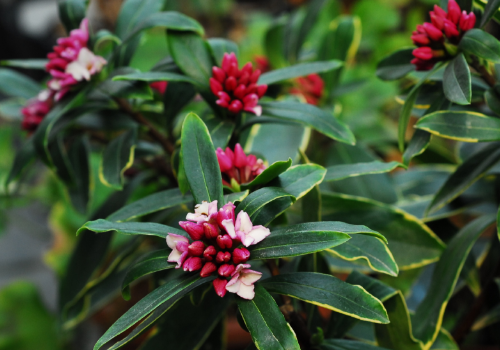The propagation method of rose
The breeding method of rose, April to May or September to October every year, is the best time to breed rose. There are many ways to reproduce rose. Here are 4 methods:
(1) cutting method. Choose the sturdy branches that are semi-lignified and cut them with dew in the morning, preferably with a heel, about 10 to 15 centimeters long, leaving two leaves, and the rest cut off, then immediately insert a shallow mud pan, insert a person to a depth of one inch, and then pour water with a spray pot and keep it in a cool place to root after a month.
(2) the method of cutting in dormant period. It can be carried out from defoliation to the Beginning of Spring before germination, and the cutting method is the same as above, but without leaves. After insertion, you can put on a transparent plastic bag and place it in the sunny place. Take off the plastic bags after sprouting in spring, and the leaves can be planted separately after turning green.
(3) Bud grafting. Budding can be carried out in both growing and dormant periods, and it can blossom as soon as 6 weeks after budding. The method is: select the rootstock, subtract the twigs, leave one of the thickest branches, choose a smooth surface, and draw a "T" shape with a knife tip 3cm away from the soil. Pry open the cortex with the tip of the knife, then select the strong bud in the middle of the branch as the scion, cut off the leaves and leave the petiole, cut it off slowly in the lower direction of the petiole, cut it into a shield shape, peel off the xylem, immediately insert it into the T-shaped incision of the rootstock, and fasten it from top to bottom with a plastic bag. Grafted seedlings should be kept in a cool place.
(4) Water insertion. This method is simple and easy to live, and is not limited by the season. Fill a large brown bottle with water, then open a hole in the center of the cork or styrofoam plug, cut it into two semicircles, add the cuttings to the hole and fix it at the mouth of the bottle, then place it in a cool window, change the water once every 3 days, and take root in about a month. the above is an introduction to the breeding method of rose.
How to culture perfume rose
As there are many varieties of rose, long florescence, beautiful color, very ornamental, more and more people will raise a pot in the room, perfume rose is one of them. Today, I will introduce the culture method of perfume rose to you.
1. Soil
The soil had better be slightly acidic soil with loose soil (pH value about 6.5), which can be properly treated with ferrous sulfate, deeply ploughing the soil, raking flat surface, and preferably cultivated in sunny beds. Pot soil 30%, pond mud 30%, humus 30%, fine coal cinder more than 10% are mass ratio, mixed and evenly used, it is best to apply a handful of fine cake fertilizer to the pot base when planting. Most of the roots of perfume rose are concentrated on the surface of the soil at a depth of 30 cm to 40 cm, so the depth of the tillage layer should be 50 cm to 60 cm.
2. Moisture
The water management of perfume rose is also an important work. Insufficient or excessive water will inhibit its growth and development, which needs to be adjusted according to its different stages of growth and development. Spring and autumn is the peak flowering period of perfume rose, during this period, the water supply should be adequate; in order to control plant growth, watering should be suspended before pruning, and the amount of water should be increased appropriately after pruning. In addition, if cultivated in sandy soil with poor water conservation, watering times should be appropriately increased; in soils with poor drainage, watering should be cautious to prevent rotting roots.

3. Fertilizer
Perfume rose likes fertilizer, especially organic fertilizer, such as barnyard manure, compost and so on. The application rate of organic fertilizer is about 150 kg per 10 plants. Perfume rose has a long flowering period. During its growth, attention should be paid to topdressing chemical fertilizer for quick effect. The ratio of nitrogen, phosphorus and potassium should be 1:1:2 or 1:2:3. The frequently used chemical fertilizer is calcium superphosphate, with an average of 2 kg per 100 square meters.
4. Pruning
After spring seedling cultivation, the buds of the first and second stages should be removed (the leaf under the bud should be cut off), the nutrition should be saved to promote the growth of branches, the residual flowers should be cut off from large trees, the sprouting tillers on the rootstocks should be removed in time, and the residual flowers should be cut off after flowering in summer and autumn. Cut off too long branches, cross branches, overlapping branches, long branches, capping strips, etc. Make good preparations for watching during Christmas, New Year's Day and Spring Festival.
The purpose of pruning is to let the perfume rose sprout as many strong branches as possible to improve the quality of flowering. In addition, pruning can also make the tree complete and balanced, making it in harmony with the space in which it lives. The best time for pruning is when the plant stops dormant and is about to sprout, or when it stops growing and is close to dormancy. There are three forms of pruning: light pruning, moderate pruning and heavy pruning. Light pruning is a short cut of healthy branches and removal of inward expanding buds; moderate pruning is cutting off or cutting off half of the healthy branches of the first year at the base; heavy pruning is that only 3-4 first-year branches are left in the whole plant, and then 20 cm above the ground. For newly transplanted plants, plants that have been pruned before planting need not be pruned in the first year of planting. After a year, the Keqi root cuts off the branches that grow weakly and cross together, and the strong branches left behind should be cut off at least half of the length. Perfume roses that have been planted for more than 3 years still need to be pruned every year to keep the plant shape perfect.
5. Pest control
The common diseases of rose are black spot and powdery mildew, so we should pay attention to the prevention and management of seedling diseases and insect pests and maintain healthy plants to resist the invasion of miscellaneous bacteria in natural cultivation techniques. Before planting large and small seedlings, sterilization and disinfection should be done according to the actual situation of greenhouse and soil. Mancozeb, chlorothalonil, carbendazim and topiramate were used alternately in spring (Bordeaux solution and stone-sulfur mixture were also suitable). It was found that red spiders and aphids could be controlled by imidacloprid and avermectin, and could also be mixed with fungicides. Huangmei and autumn rain are the peak of the incidence of black spot, and the incidence of damp, hot and rainy in summer is also very strong. During this period, the interval of pesticide application should be shortened. Spray attention: generally 8: 00 to 10:00, 4: 00 to 7: 00 in the afternoon. It is better to spray without wind on a sunny day.
6. Matters needing attention in breeding
Perfume rose is a light-loving plant. In the process of cultivation, you should choose sunny ground and avoid planting in the shady side of tall buildings, trees and hillsides.
Some anti-freezing measures should be taken in areas where the minimum temperature in winter is below minus 15 ℃. For example, 20 cm of soil is piled at the base of the plant, or the plants are wrapped up with grass curtains, hemp bags, plastic films, etc. In areas where the lowest temperature in winter reaches minus 20 ℃, it is necessary to dig up the soil on one side of the plant, put it down and cover it all with soil.
Angela rose culture method
Reproduction method
Angela rose propagation methods are divided into three methods, namely, cutting propagation, grafting propagation, tissue culture propagation and so on.
Cutting propagation: the method is that 3-5 strong buds of the tour guide are treated with rooting powder, and then cut into the substrate made of peat and perlite, the cutting depth is required to reach 1-2 buds, and the base produces milky adventitious roots after 15-30 days.
Cutting precautions: planting can be planted with clean and hot-fried river sand, which can play a role in sterilization and better let the cutting seedlings survive.
Grafting propagation: before grafting, first find the rootstock, the rootstock mainly to find the same attribute of plants as rootstocks, and then grafting. Bud grafting method: select very strong growth buds peeled off, rootstock cut a "T"-shaped interface, 1 cm wide, 1.5 cm long, the buds are embedded in the interface, tied up with plastic belt, and survived after 30 days. Branch grafting: split the rootstock 3-5 cm from the ground and cut 2 cm longitudinally. The scion is required to be a tender shoot with unfolded leaves, which is the same thickness as the rootstock. After that, it will be solid with plastic tape and heal and survive after 10 days.
Tissue culture propagation: terminal buds or tender leaves were often used as explants. After disinfection, 25% of the terminal buds were inoculated on the medium of MS+6BA2+NAA0.1. After 5 weeks, 25% of the terminal buds developed into new seedlings, and then transferred to the rooting medium of 1/2MA+NAA1. About 70% of the seedlings took root after about 3 weeks.
Angela planting method
Angela rose planting method: Angela rose can be planted in a basin or in a garden. If it is newly planted Angela rose should be properly pruned, generally leaving 4-5 buds.
1. Requirements: if the flowers are planted in the pot, it is very important to choose the flowerpot. Generally, the old flowerpot should be cleaned, the new flowerpot should be used after soaking in water, and the flowerpot of the right size should be chosen.
2. Potted plants use cultivated soil, usually 50% garden soil, 30% rotten waste soil, 10% Rich 20% crude bran ash, and 500% soil plus 10-15 kg of rotten compost or cake fertilizer.
3. Water: water should be watered with appropriate temperature, about once every 3-5 days in spring and 1-2 times a day in summer.
4. Fertilization: Angela rose likes fertilizer, usually in 7-10 days can be applied thin fertilizer once, at the same time is the appropriate fertilization for buds.
5. Rose generally likes the sun, but in summer, to avoid giving the rose appropriate shade treatment, so as not to sunburn the rose.
- Prev

Cutting methods of Rhododendron
In the cutting method of rhododendron, cutting method is often used to propagate rhododendron. Rhododendron cuttings can be carried out from April to August, and the matrix is better with sediment in the gully, or can be replaced by river sand. After screening, 1% potassium permanganate is used for sterilization and placed in a tile basin for use. Use your hands to pick up the semi-lignified branches of the year.
- Next

Winter maintenance of Daphne odorifera in Phnom Penh
For the maintenance of Phnom Penh Ruixiang in winter, Phnom Penh Ruixiang should pay attention to the following points in winter: (1) when there is no frost and the temperature has not dropped to 0 ℃, the management of cuttings in the same year should remove the shading net, open the plastic film and let it come into direct contact with sunlight and water, which can promote the growth and development of flowers and seedlings.
Related
- Fuxing push coffee new agricultural production and marketing class: lack of small-scale processing plants
- Jujube rice field leisure farm deep ploughing Yilan for five years to create a space for organic food and play
- Nongyu Farm-A trial of organic papaya for brave women with advanced technology
- Four points for attention in the prevention and control of diseases and insect pests of edible fungi
- How to add nutrient solution to Edible Fungi
- Is there any good way to control edible fungus mites?
- Open Inoculation Technology of Edible Fungi
- Is there any clever way to use fertilizer for edible fungus in winter?
- What agents are used to kill the pathogens of edible fungi in the mushroom shed?
- Rapid drying of Edible Fungi

